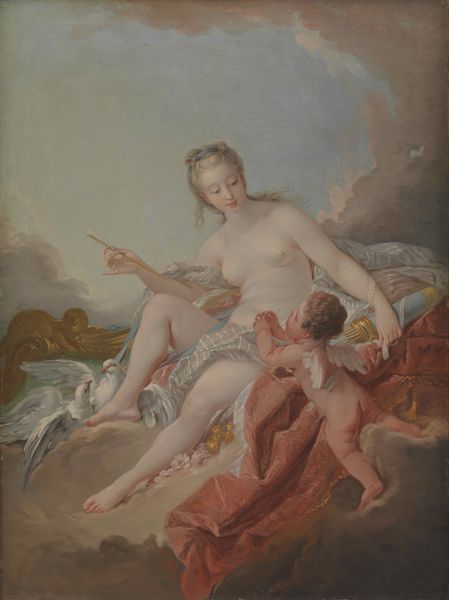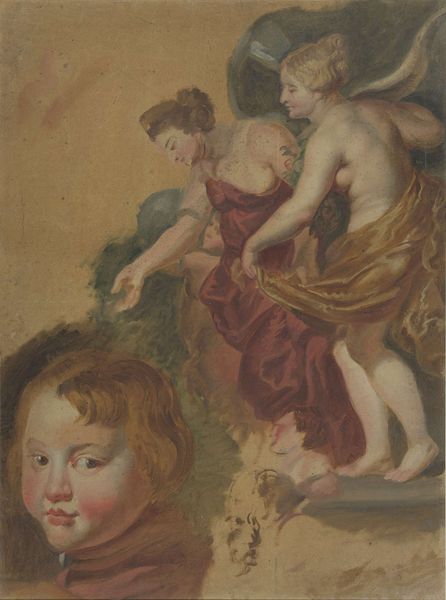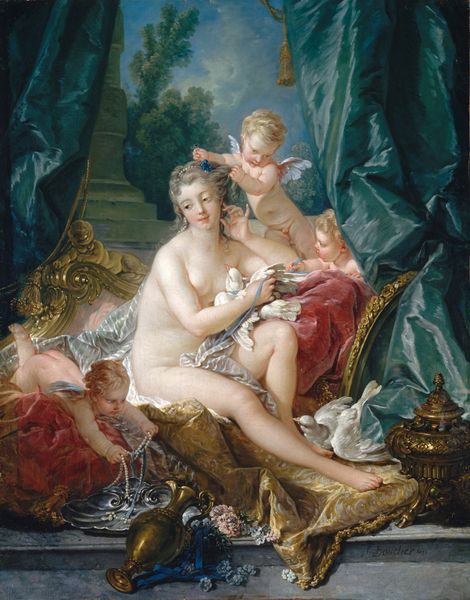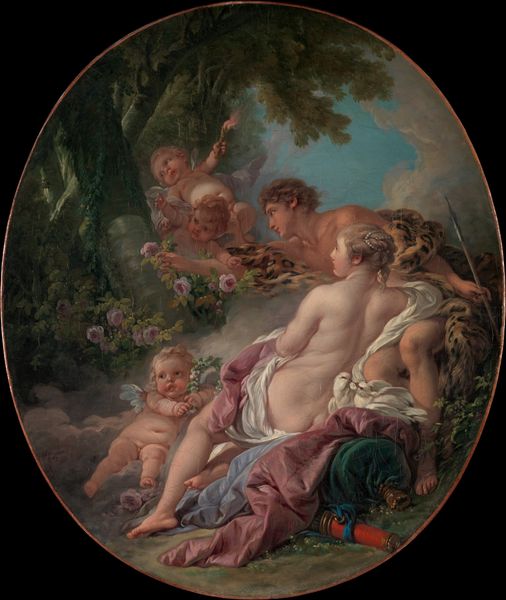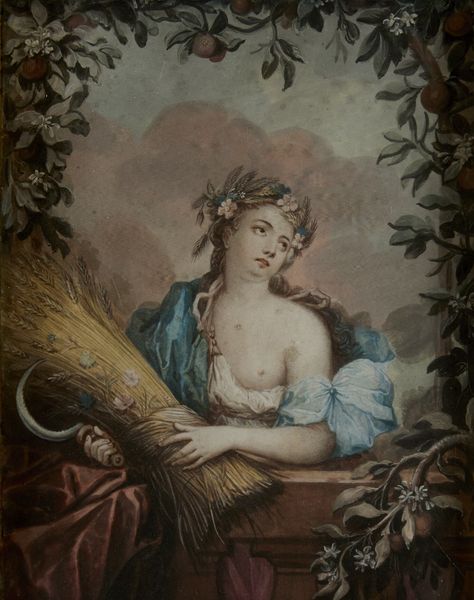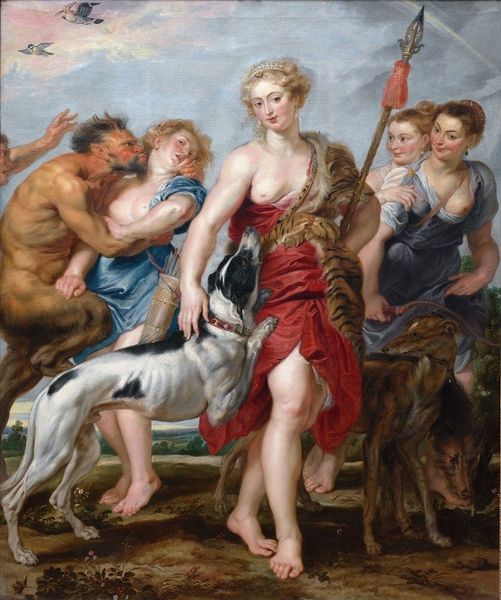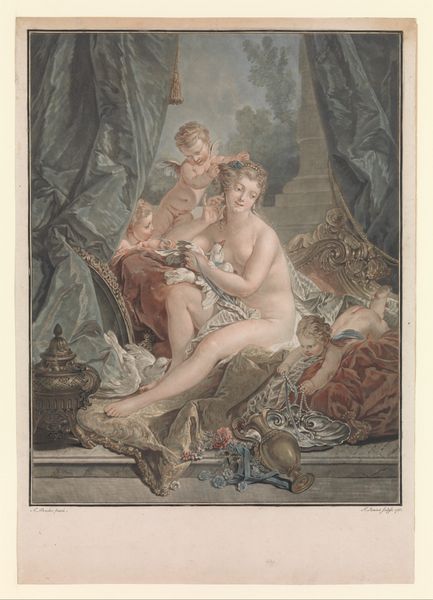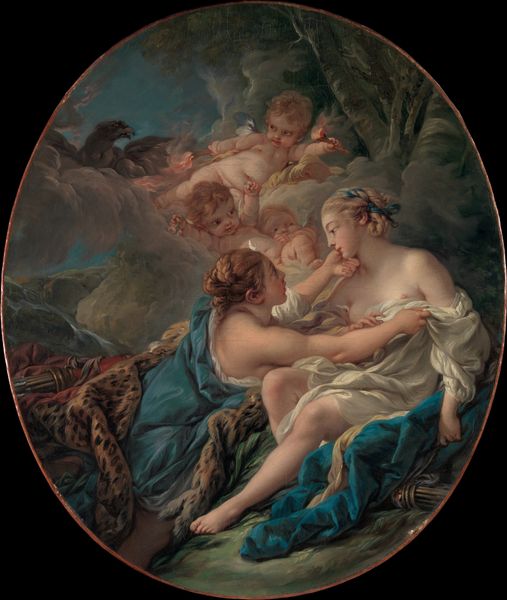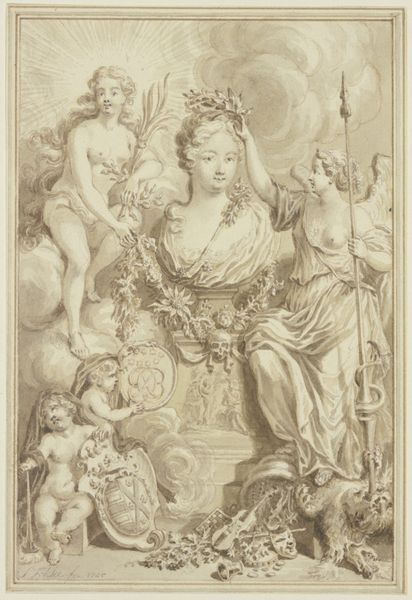
Portrait of Wilhelmina of Prussia in a medallion with allusions to her marriage to Prince William V on 4 October 1767 in Berlin (Frederika Sophia Wilhelmina) 1767
0:00
0:00
friedrichreclam
Rijksmuseum
oil-paint
#
portrait
#
gouache
#
allegory
#
oil-paint
#
oil painting
#
coloured pencil
#
history-painting
#
rococo
Dimensions: height 49.2 cm, width 38.9 cm, thickness 2.5 cm, depth 6.8 cm
Copyright: Rijks Museum: Open Domain
Curator: This image is a treasure. We’re looking at a 1767 oil painting, “Portrait of Wilhelmina of Prussia in a medallion with allusions to her marriage to Prince William V on 4 October 1767 in Berlin,” currently residing at the Rijksmuseum. Editor: Well, my initial thought is: this feels incredibly… fluffy. The soft light, the cherubic figures, it's like a celebration of Rococo excess. Wilhelmina’s in the center, framed like she’s the main prize. Curator: Indeed. This piece functions as a piece of marriage propaganda. Wilhelmina's likeness is encased in the medallion, an obvious nod to her royal status, and it's overflowing with symbolism tied to her union. Look at the angels, doves, roses...pure celebration of lineage and, of course, duty. Editor: It speaks volumes, doesn't it? The woman as a commodity. Her individuality is almost obscured by this onslaught of symbolism. The two birds at the bottom of the image feel very symbolic to that thought; what is that emblem about? Curator: The coats of arms? Those are declarations! Emblems proclaiming both the Prussian and Orange lineage; that heraldic flourish essentially cements the union’s importance, declaring stability. It makes you wonder how she truly felt, doesn't it? Editor: It does. Because beneath the sugar coating of Rococo sentiment, I see this stoic, slightly melancholy expression in her portrait. She's beautiful, undoubtedly, but is there also a hint of resignation there? Being reduced to heraldry must weigh on a person. Curator: It's difficult to discern authentic emotion beneath layers of courtly expectations, and it might just be my mind filling in gaps. But yes, absolutely a consideration! In essence, this portrait operates on dual layers: a public declaration of power and continuity, versus the private reality of an arranged marriage within the confines of aristocratic duty. What a conundrum for this artist. Editor: Exactly. It's like she is there and yet she isn’t. I am always cautious when looking at portraits from the time. Who was it actually made for, how, and by who? Curator: A great, final question to dwell upon here, Editor!
Comments
No comments
Be the first to comment and join the conversation on the ultimate creative platform.

